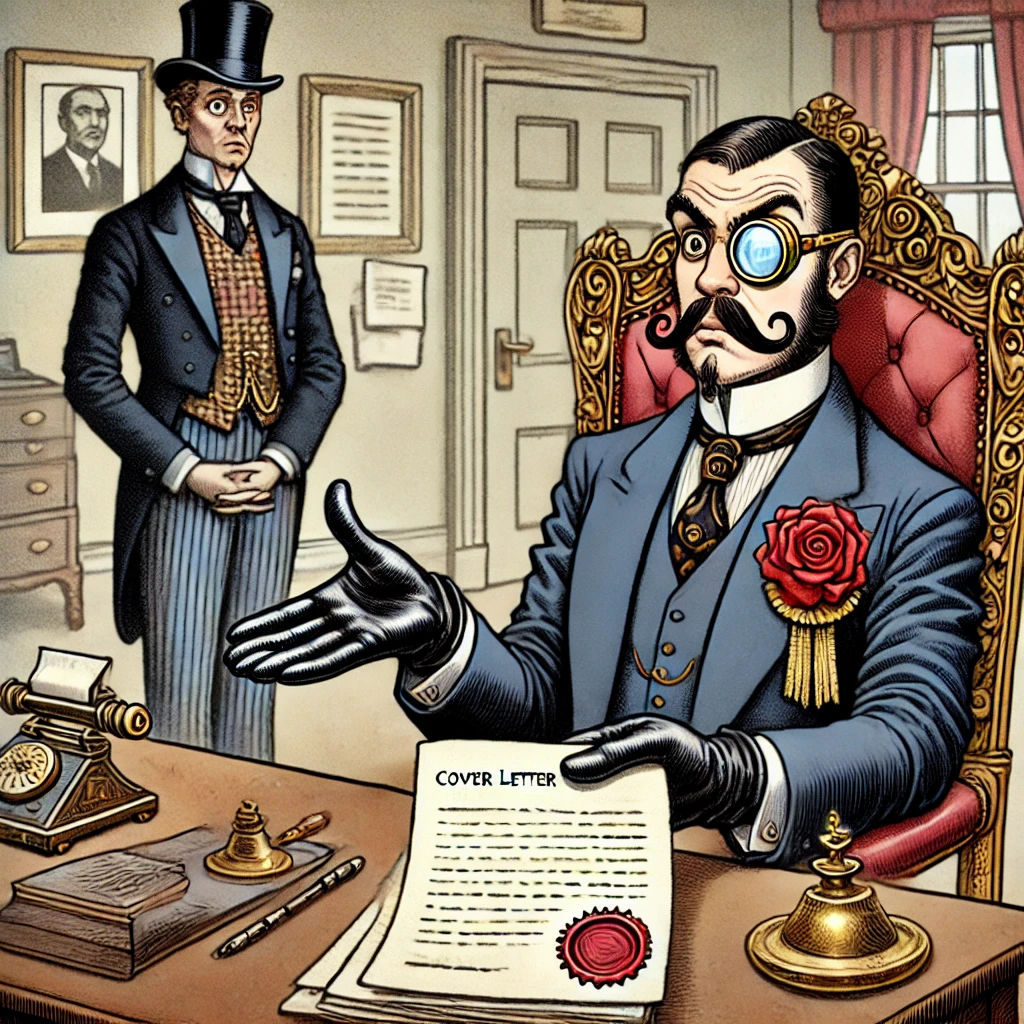Table of contents
Open Table of contents
The Cover Letter Conundrum
We’re approaching an era where the etymology of “Cover Letter” won’t be immediately apparent to the potential workforce. In the past, a cover letter was something you placed in the same envelope as your resumé. Apart from expressing interest in working for the company, it would explain to the recipient why you were sending them the other enclosed document, your resumé, and point out the qualifications that were relevant to the job you were seeking.
Then online applications and LinkedIn hit the scene and the online application collected all your skills via integration with LinkedIn or programmatically parsing your uploaded resumé. It asked questions about why you wanted to work for the company and sussed out all the important highlights from your career experience.
So by filling out an online application, you’re effectively explaining to the recipient (or the company’s HR department) why you’re sending them a resumé and indicating which of your qualifications are pertinent to the role. Doesn’t that render the cover letter obsolete?
No
The cover letter is in no way obsolete. In fact, most applications I’ve come across have a dedicated file upload field for your cover letter. No way we’re going to submit an application without uploading something to that field. I mean, we want the job, right?
I can’t help but imagine a cartoonish scene where a pretentious hiring manager sits at a large, ornate desk, dressed in a sharply tailored suit, complete with an exaggeratedly oversized monocle. They have an air of superiority, with their chin held high and an eyebrow raised in a haughty expression, hand extended in expectation of the tributary document.

Why?
What value is left in the dying document? The answer, to some, is personal touch.
Hang on a sec
Personal touch? Companies want to know why you chose them specifcally. Part of the formulaic cover letter is the mandatory how did you hear about the position? and why do you want to work for X company?. Let’s take a look at a typical blurb (sourced from ChatGPT):
“I want to work at [Company Name] because I admire your commitment to [specific value or mission]. I’ve followed your recent projects, particularly [mention any specific project or initiative], and I’m excited about the opportunity to contribute to such innovative work. I believe that my skills in [mention relevant skills or experiences] align well with your team’s goals, and I am eager to grow professionally in an environment that values [specific aspects of the company culture]. Overall, I see a great opportunity for both my personal growth and contributing to the success of [Company Name].”
But let’s be honest with each other. You only heard about this company 5 minutes ago, right? In what world have you fallen madly in love with a business after scanning a web page for 30 seconds and seeing that you have some relevant skills necessary to work there?
In a world where they pay your bills and put food on your table
The reality is job applications in the modern era are not personal. There is no emotion. I’m a software engineer so yes, I’ve been enthusiastic about seeing TypeScript, Node.js, Python, React, React Native, Golang, Kubernetes, etc. in a job listing because those words make me salivate and think about all the life goals I’ll accomplish thanks to being somewhat familiar with them. If your company uses any of these, please email me. I salivate over hammering away at the keyboard using stacks made out of those cryptic words because that means I’ll be able to take care of my wife and son, go on vacations, pay off our mortgage, buy real estate, buy land and homestead, and ultimately display a rude hand gesture to that very institution I slaved for for so many years.
So there you have it
The cover letter is absolutely still relevant in modern job searching and in career transitions. While the motivations for writing it may vary wildly between people, especially as you traverse the spectrum of being fresh on the work-for-the-man market to fully off-grid disconnected. The cover letter offers a bit of originality in an otherwise mechanical and dreary landscape of buzzwords, keywords, career words, start dates, end dates, keyword parsers and scripted LinkedIn messages. Copy your resumé and the job description into ChatGPT and ask it to write you one “that doesn’t sound AI-generated”. Tweak it to fix the nightmarish inaccuracies and ship it.